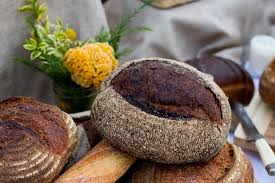Sourdough bread, celebrated for its distinctive taste and texture, has captured the attention of home bakers worldwide. In a significant advancement, scientists are investigating its health benefits through the HealthFerm project, an innovative European initiative led by Professor Christophe Courtin at KU Leuven. The research explores how fermented foods impact human health and the environment.
The project has successfully engaged European communities, collecting over 800 sourdough starter samples from enthusiastic home bakers. This diverse range of starters creates a rich microbial library, crucial for identifying beneficial microbes involved in fermentation. HealthFerm scientists are employing state-of-the-art genomic sequencing techniques to characterize these microorganisms, paving the way for developing innovative plant-based fermented products to enhance gut health.
A significant element of HealthFerm is its comprehensive methodological approach, which includes five extensive human intervention studies. These studies will empirically evaluate the effects of fermented foods on participants’ microbiomes and overall health outcomes, potentially linking specific fermentation processes to measurable health benefits.
Ultimately, the HealthFerm initiative aspires to translate traditional fermentation practices into scientifically grounded dietary recommendations. By creating novel plant-based fermented products, the project aligns dietary habits with sustainability objectives, promoting foods that are advantageous for human health and environmentally friendly. This research highlights fermentation’s potential as a tool for nutritional enhancement and positions it as a strategic approach to confronting contemporary health and environmental challenges.


Comments
It is no surprise that we would be able to identify a wide variety of potentially helpful microbes in sourdough starters, and it is promising that a large number of home bakers are helping the project. Where I see this going is the development of a comprehensive list of beneficial (or unbeneficial) species that can be found in most starters, as well as a methodology for how to select for the helpful ones. Through this research, they will hopefully be able to determine what the ideal starter looks like from the data they have available, and they may be able to identify feasible steps that we can use to optimize our starters. That being said, a big appeal of sourdough bread has always been the uniqueness of any given sourdough compared to commercial products (or other sourdoughs), and people may be content with leaving their starters as they are.